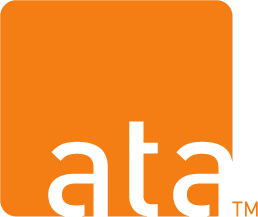What is Telehealth?
Telehealth is the provision of health-related services remotely through technology such as computers, smartphones, or tablets. This technology can be used to facilitate communication between practitioners and participants and to deliver health education. Research has documented that many WIC participants are millennials or post-millennials who use smartphones, including mobile apps and other technology (e.g., tablets), daily. WIC participants want and support utilizing technology to better access existing WIC services.
Benefits
In addition to meeting participant needs, telehealth innovations offer many potential benefits to State Agencies (SA) including:
- improving the quality of programming and access
- ensuring relevance for changing WIC participant populations
- providing flexible and adaptable tools to meet learning preferences
- addressing potential shortages of and/or barriers to accessing qualified professionals
- increasing opportunity for engagement and more frequent reinforcement of education messages for deeper impact
Challenges
While benefits of telehealth are apparent for both SAs and participants, there are challenges to consider for successful implementation:
- privacy and confidentiality concerns
- connectivity issues for rural or remote populations
- differential access to technology
- provider and participant comfort with technology
- cultural competency
- training and infrastructure requirements
WIC COVID-19 Pandemic Research & Reports
WIC State Agencies and local agencies quickly pivoted to telehealth to respond to the COVID-19 Pandemic. Here are examples of how several agencies responded to the pandemic and associated research and reports:
- WIC Participants’ Perceptions of COVID‑19‑Related Changes to WIC Recertification and Service Delivery
- “It Was Actually Pretty Easy”: COVID-19 Compliance Cost Reductions in the WIC Program
- Informing the Future of WIC: Lessons Learned during COVID-19 from California WIC Participants
- Informing the Future of WIC: Lessons Learned during COVID-19 from California Agency Directors
- Acceptability, Preference, and No-Show Rates for In-Person and Phone-Based Consultations at Nine WIC Centers in New York City Before and During COVID-19
- Changes in USDA Special Supplemental Nutrition Program for Women, Infants, and Children (WIC) Operations During the COVID-19 Pandemic: A First Look at the Impact of Federal Waivers
- Multi-State WIC Participant Satisfaction Survey: Learning From Program Adaptations During COVID
- Association of Remote vs In-Person Benefit Delivery With WIC Participation During the COVID-19 Pandemic
- Insights from Washington State’s COVID-19 response: A mixed-methods evaluation of WIC remote services and expanded food options using the RE-AIM framework
Additional Telehealth WIC Examples
Telehealth has been used in a number of ways to support the delivery of WIC programming and services. Some additional examples of telehealth innovations in WIC include:
- Mississippi WIC Telelactation Program: Assessing the impact of 24/7 video lactation support
- Case Study of “WIC Video Visits” Program
- Breastfeeding and Telehealth
- TeleWIC: Providing Services in New Ways Webinar by the National WIC Association (note: requires first and last name and email to access)
- A Smartphone App for Families With Preschool-Aged Children in a Public Nutrition Program: Prototype Development and Beta-Testing
- WIC2Five: Using Mobile Health Education Messaging to Support Program Retention
- Texting for Retention Program: Colorado WIC Program
- Using Telehealth to Improve Maternal and Child Health Outcomes in Georgia
- Two-way text-messaging to complement WIC breastfeeding peer counselors (BFPCs) to provide timely breastfeeding support prenatally
- WIC online nutrition education compared to usual WIC care






